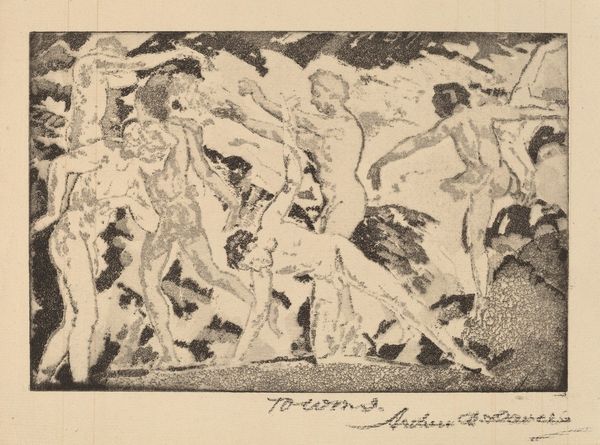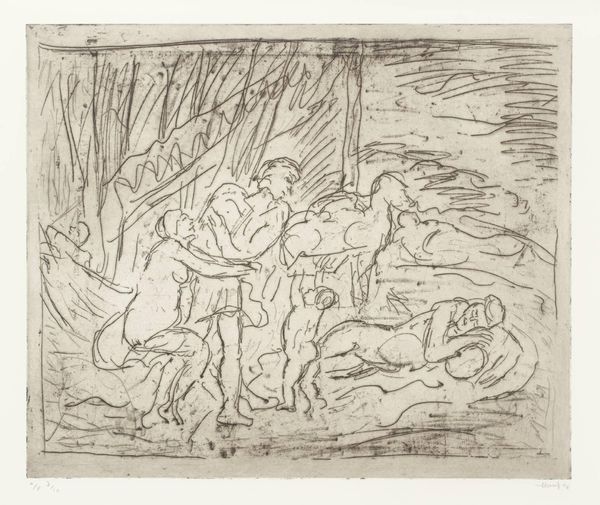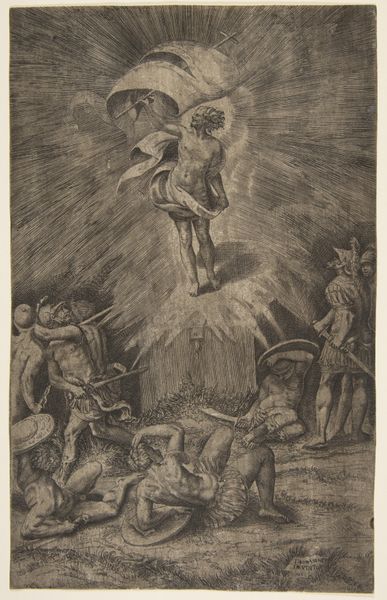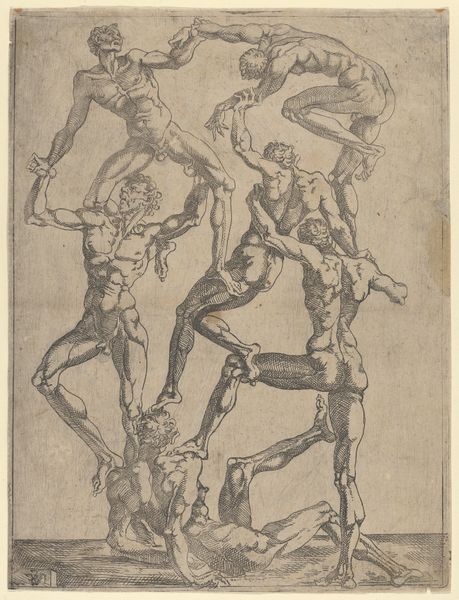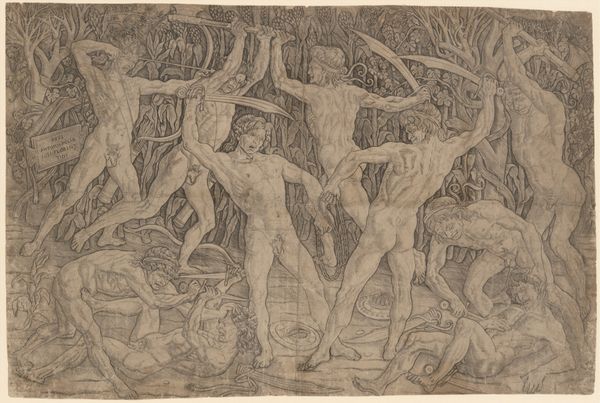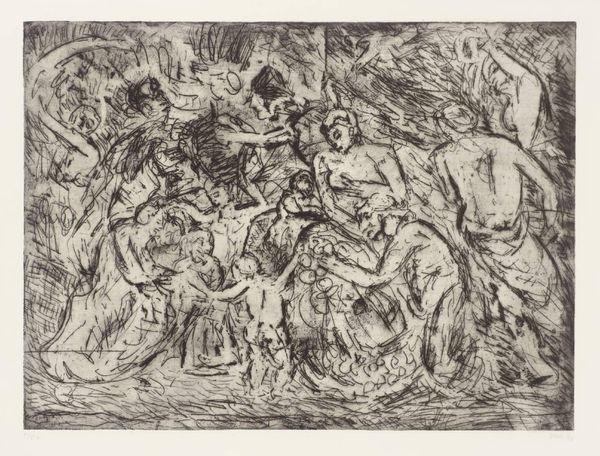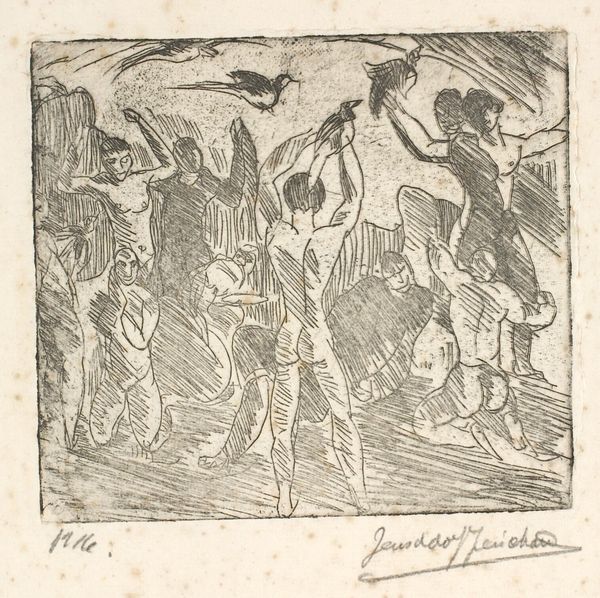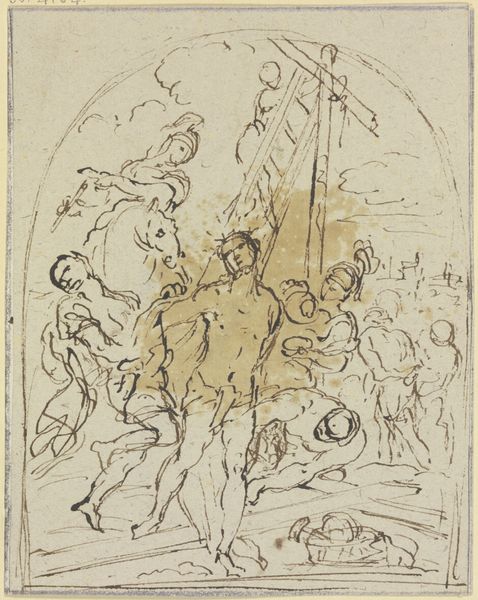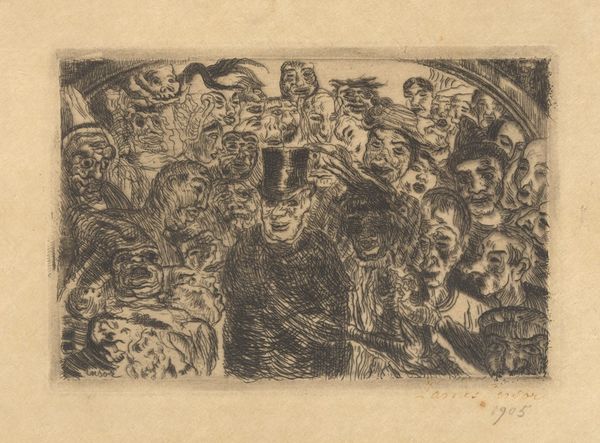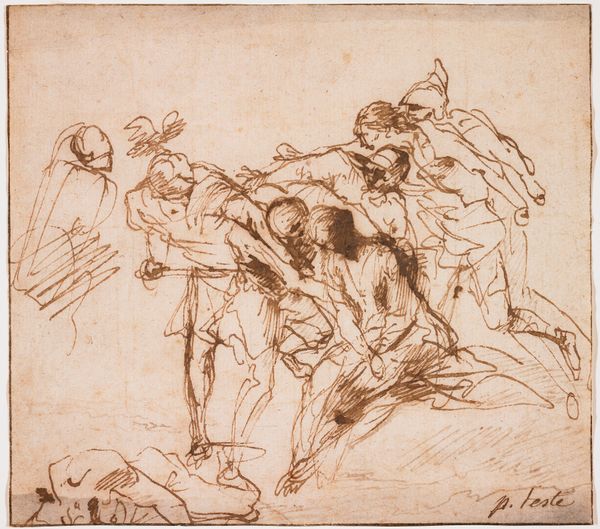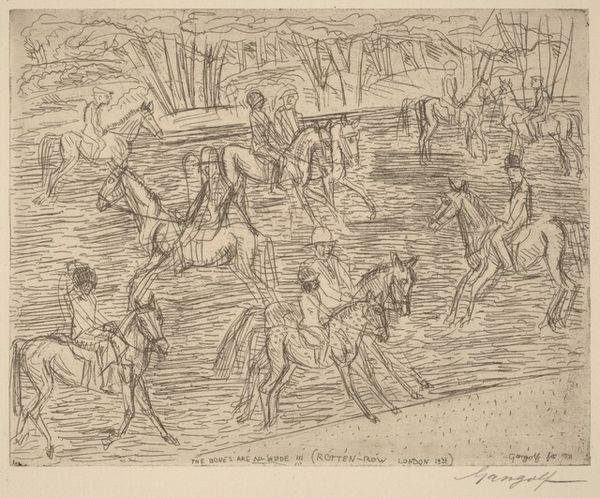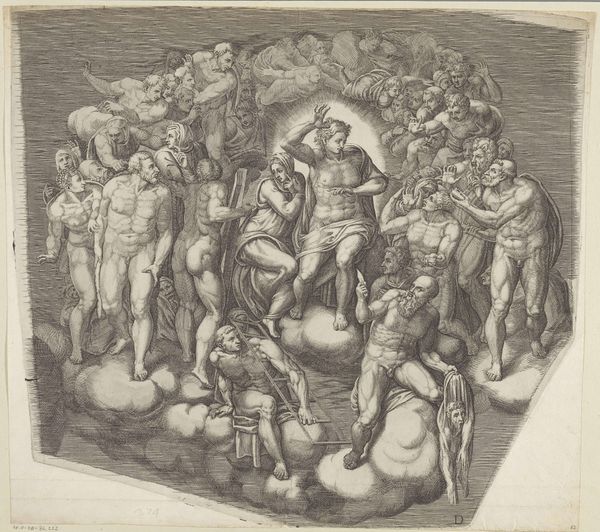
drawing, print, etching, ink
#
drawing
#
pen drawing
# print
#
etching
#
landscape
#
figuration
#
ink
Dimensions: 112 mm (height) x 147 mm (width) (plademaal)
Editor: This etching, "Eventyrfuglen" by J.A. Jerichau, created in 1916, is quite striking. There's a rawness in the lines and the almost brutal figures. What kind of narrative do you think the artist is trying to convey, considering the context of its production? Curator: Let’s consider the materiality first. The printmaking process itself—etching with ink—allowed for a specific kind of mark-making. Look at the density of the lines; the labour involved in creating this matrix and then reproducing the image multiple times suggests an intention to disseminate, to share this vision widely. What social purpose might that have served in 1916? Editor: That's a really interesting point about dissemination. The style seems almost…primitivist? Were they thinking about reaching a wider audience who might not understand academic art? Curator: Precisely! Consider the context. World War I was raging. There was a surge of interest in folk traditions and what some considered "authentic" modes of expression that challenged the establishment, connecting the figures' seeming lack of adornment with their raw humanity and the labour the artist invested in revealing them. What does the contrast between the roughness of the mark-making and the idealised figures tell you about that period? Editor: It makes me wonder if this deliberate 'roughness' of execution might be making a statement itself - pushing back against the smooth, idealized styles. I see this piece more about process and material, and challenging the usual notions about fine art through the conscious choice of certain labor-intensive methods of creation. Curator: Exactly. The deliberate act of making visible the means of production subverts the traditional emphasis on the artwork as a purely aesthetic object, separate from the social and economic realities that produced it. Editor: I'd never really considered that perspective. Now I'm thinking differently about printmaking in that time period.
Comments
No comments
Be the first to comment and join the conversation on the ultimate creative platform.
